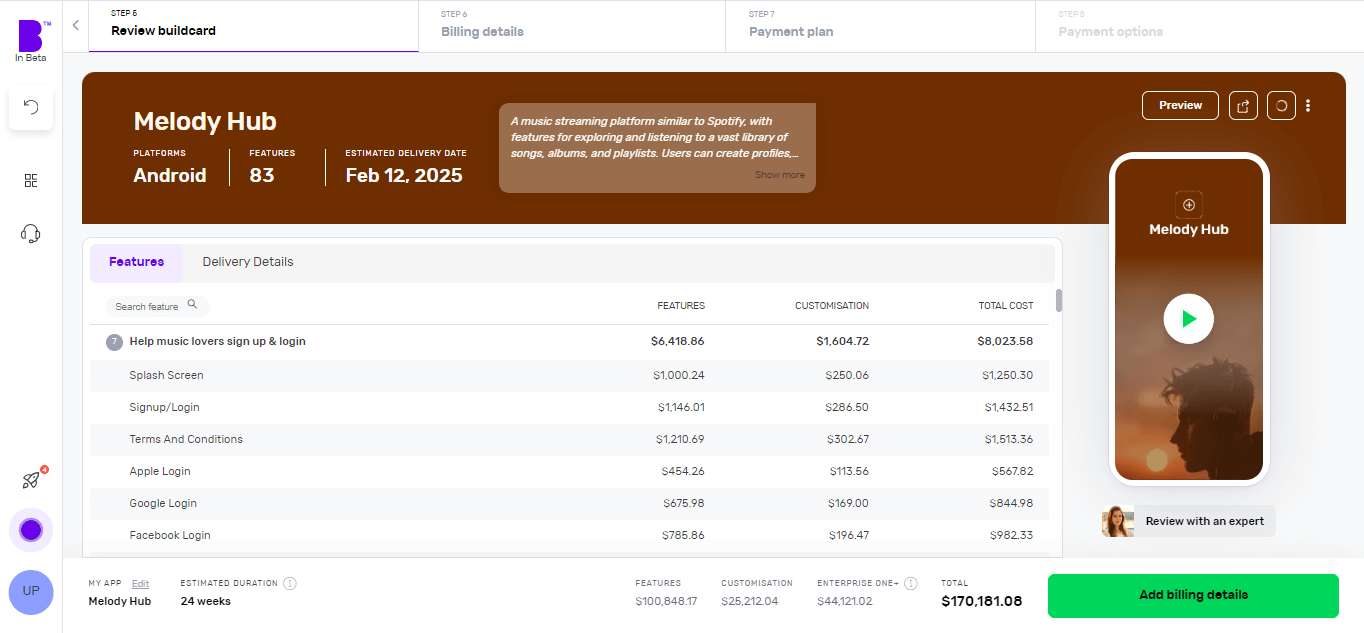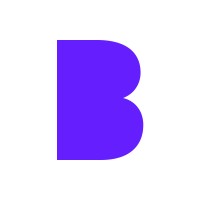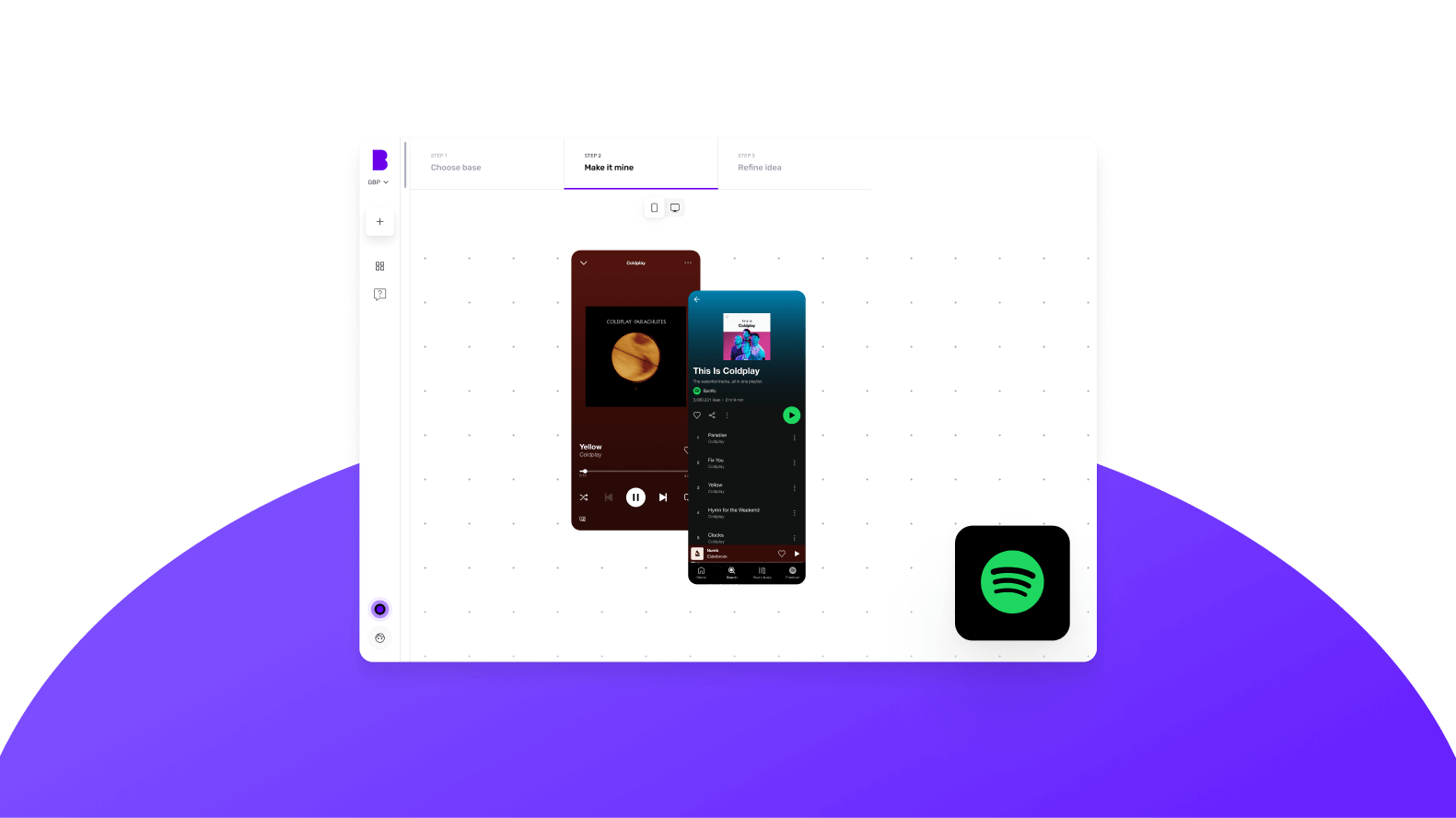Spotify is a digital music streaming service that offers users access to millions of songs and podcasts from artists all around the world.
The platform alone generated €13.24 billion in revenue and had over 551 million monthly active users in 2023, which included 220 million subscribers.
Even though Spotify has earned popularity with a huge user base, it has some downsides. For example, non-premium users have to face frequent and repetitive ads, which can disrupt the listening experience.
Also, there are limits on the number of songs users can download for offline listening and add to a personal playlist.
As a market debutant, you could help solve these user problems.
In this guide, we'll delve into the features your music streaming app needs and explain how you can create your own music streaming app using Builder.ai.
What is a music streaming app?
A music streaming platform is a digital tool that allows users to listen to and download songs, podcasts and audiobooks online without downloading them. It offers personalised recommendations and various subscription models, which enhance the way people discover and enjoy music on Spotify and YouTube Music.
Music streaming apps are here to stay
The global music streaming application industry is experiencing significant growth. As of 2023, the market size is $34.53 billion and is expected to grow by 14.4% in 2032.
This is because the integration of cutting-edge technologies like Artificial Intelligence into music streaming apps not only enhances audio quality but also personalises user experiences. Additionally, by broadening their content to include podcasts, live performances and videos, streaming services are appealing to a wider audience and adapting to changing consumer preferences.
Despite the challenge of piracy, the music streaming industry continues to expand its user base and solidify its position in the entertainment landscape.
Types of music streaming apps
Here are a range of different music streaming apps you could think about developing…
On-demand streaming services
These platforms allow users to select and play any song, album or playlist at their convenience — often with the ability to download and create custom playlists for offline listening. For example, Spotify offers a vast library of tracks, personalised playlists and social sharing features.
Internet radio stations
Internet radio or web radio are similar to traditional radios, which stream music, podcasts and pre-recorded content on the internet unlike traditional radio waves like Pandora.
Hi-resolution audio streaming
Targeted at purists, these platforms specialise in high-quality sound, offering music in the best audio fidelity like Tidal HiFi.
Video-based streaming
These services incorporate music videos into their libraries, allowing users to switch between listening to songs and watching music videos like YouTube Music.
Must-have features of a music streaming platform
A music streaming platform typically includes several key features, including… 👇
Vast music library
A wide range of songs, albums, artists and genres is essential to cater to diverse musical tastes and attract a broad audience for your music streaming app.
User-friendly interface
A simple and easy-to-navigate interface helps users find and play music effortlessly, enhancing user satisfaction and engagement.
Search functionality
A robust search algorithm in your music application will allow users to quickly find specific tracks based on a varied range of keywords stretching from artists names, albums or playlists.
Playlists and recommendations
Personalised playlists and recommendations based on users’ listening habits, preferences and browsing history can significantly enhance the listening experience for your users.
Social sharing features
Integrating your streaming platform with social media to share music or playlists with friends can increase user engagement and attract new users through social recommendations.
Cross-platform usability
Ensuring the music streaming platform works seamlessly across various devices and operating systems (iOS, Android and Web) broadens the user base and improves accessibility.
Subscription options
Flexible pricing models, including free streaming with ads and premium subscriptions without ads, cater to different users across multiple financial backgrounds. These features shall collectively contribute to a rich and enjoyable user experience, encouraging longer engagement times and fostering loyalty among your users.
Who should you choose to build your music streaming platform?
There are many ways you can create a music streaming platform. If you’re a programmer, you could create one yourself, but this might take a while. After all, complex music streaming apps are made up of hundreds of thousands of lines of code.
Alternatively, you can hire a team of mobile app developers, who can build sophisticated, custom music streaming software. However, the challenge here is to accurately calculate the total cost of app development.
They often charge on an hourly or daily basis, and once you factor in the costs of app development, design, app testing and listing, your expenses can quickly spiral out of control.
No-code app builders are a simpler, more budget-friendly solution. You don’t need coding skills to use them and you can build apps quickly by dragging and dropping pre-made components.
However, no-code platforms may lack the flexibility to add complex features or unique customisations. Scaling your app as your user base grows may also be challenging due to performance limitations.
This is where Builder.ai comes in. 👇
Why Builder.ai is different
Builder.ai bridges the gap between these different app development routes.
Our platform provides the customisation and scalability of professional developers along with the efficiency and cost-effectiveness of no-code builders, making it an ideal choice for developing your music-streaming app.
Around 80% of all software is made up of around 650+ features. We package each basic feature as a reusable Lego-like block. Explain your idea to our AI companion, Natasha, and she uses these blocks to rapidly create an outline of your app.
Because Natasha handles all the repetitive coding, we can complete tasks faster and cheaper. Then it’s off to our app design team and mobile app developers. They personalise it and create any bespoke elements you need.
To build your music streaming platform, simply head over to Builder Studio. The Builder Studio platform has been built with user convenience in mind and intuitively guides you through the app creation process.
Let’s dive in with the step-by-step process 👇
Want to start your app project with us?
Book a demoSpeak with one of our product experts today.
By proceeding you agree to Builder.ai’s privacy policy and terms and conditions

1 - Discuss your ideas with Natasha

On Builder Studio, you’re welcomed by Natasha. You can express your music streaming app idea to Natasha via voice, text or uploading a PDF or doc file.
Before you chat with her, have a checklist of app features you want to create and be as descriptive as possible about your app idea. The more detailed information you give to Natasha, the better her suggestions will be.
“I want to develop a music streaming platform like Spotify, where users can explore and listen to a vast library of songs, albums and playlists from various artists and genres.
The platform should include user login and profile management functionalities, allowing users to create and customise their own playlists, follow their favourite artists, and receive personalised music recommendations based on their listening habits.
It should also enable users to stream music online, download tracks for offline listening and access exclusive content such as podcasts and live performances.
For revenue generation, the platform should incorporate features for in-app advertising and offer premium subscriptions that provide ad-free listening and additional benefits.”
2- Choose a base

Once Natasha has your requirements, she’ll create a custom framework for your app based on everything you tell her. She'll also suggest some pre-built bases she thinks are best suited for your app.
For example, once you tell her to create an app like Spotify, she’ll suggest a custom base similar to Spotify and share any matching core bases as well.
You can choose up to 3 you feel are related to your big idea by simply clicking the ‘+’ icon. These selections make it easier for us to understand the features your app needs. When you’re ready, click 'Next'.
3 - Make it mine

The 'Make it mine' step aligns your app with the identity of your brand. In this step, you choose the name to your app, select its colour scheme using the colour wheel and upload the logo of your brand.
Once you’ve personalised your app’s name, colour and logo, you can click ‘Next’.
4 - Refine your app idea

Now comes the fun bit.
In the 'Refine idea' stage, you can review and customise your app journeys and features and also create an instant prototype of your app.
Journeys
In only a matter of seconds, Natasha creates app user journeys with corresponding features.
Go through these journeys carefully and see if your app needs additional journeys. For instance, check if you want to add journeys for monetization, sending notifications or any other relevant journey.
To add journeys, click on 'See more suggestions'. Doing so will open the list of pre-built journeys. You can browse the list and select the journeys you’re missing. You can also add custom journeys by clicking on 'Add custom journey'.
Features
By clicking on individual journeys, you can see the feature list each journey contains. Doing so will open the features list each journey contains. You can scroll through the features list and check if a journey contains non-essential features or if you want to add extra features.
To remove a non-essential feature, you can hover over the feature and click ‘Remove’. This way you can manage project costs. If you’re not sure what features to remove, you can click on an individual feature and check the label at the top. We highly recommend keeping the ‘Essential Features’.
In case you want to add more features, you can simply click the ‘+’ button. Here you can go through different categories or use the search bar to look for missing functionality. In case you don’t find the feature you’re looking for, you can also add a custom feature by clicking on 'Add custom feature'.
Instant prototype and user flow
Once you’re happy with the journeys and features of your app, you can create a prototype by clicking on 'Preview your app' in the top-right corner.
Sign up and Natasha will create a working prototype of your app. You can click on the screen at different areas to progress through the journey.
You can also see the user flow by clicking on the 'Flow mode' at the top of the screen to see how users will interact and navigate within your app.
If you need extra help, Natasha is on hand to help.and you can interact with her at any time by clicking on 'Speak to Natasha'.
She’ll give you suggestions and help you find features or journeys from the library. Or you can click on 'Book a demo' to talk to our product managers who’ll guide you through your app development journey.
Click on 'Save & Continue' to go to next step and also to save your progress or it might get lost.
5- Plan Delivery

It’s time to choose the platforms you want your music streaming app to be available on. Want a music streaming iOS app? Click iOS. Fancy a music streaming Android app? Hit Android. Not sure whether Android or iOS is better? Choose both to develop simultaneously and see how it changes the price and timelines.
Next, you can choose to add Natasha to your platform to supercharge the customer experience out of your music streaming app. Natasha uses Large Language Models (LLMs) to engage your customers in fluid, human-like conversations.
In the development speed section, can change the speed of each phase according to your needs. The faster the development speed, the higher the costs and vice versa.
Next up is Design. If you have your app designs ready, you can save your costs by clicking 'You have design' and we’ll reduce your costs accordingly. You can share your design files (preferably in Figma) and our designers will upload them, so you can kick off straight away.
If not, you can choose the 'We do your designs' option. Here, you simply need to add your brand assets and we'll do everything from storyboarding to fully designed screens.
Now it’s time to plan the phases of your project. Here you get 3 options:
Clickable prototype: you’ll get a visual representation of your app to test with users
Basic build: you’ll get an MVP (Minimum viable product) – a hard-coded but simplified version of your idea. This allows you to collect feedback and iterate before you do a full build
Full Build: you’ll get market-ready software, including a kick-off with our product team and review sessions
After that, you need to select your support plans. With 'Full Build' you get one year of Studio One support included free of charge.
Once you’ve planned your delivery, click on 'View Buildcard'.
6 - Review Buildcard

Buildcard provides you with a bird's eye view of all the selections you made in the previous steps. Here, you can review all the features, cost per feature and delivery details.
You can also download the PDF of Buildcard or invite others to show your team members what you’re building.
If you want to make any changes, simply click on 'Edit Buildcard' under the 3 dots in the top-right corner.
If you’re happy with everything, click on 'Add billing details' to go to the next section. Alternatively, if you want to review it with experts, click on 'Review with an expert'.
7 - Select your payment plan

We offer weekly or monthly payment instalments, with visible payment dates and amounts for each option. You can also choose to pay upfront to reduce the cost of your build.
Simply select your preferred billing cycle, then click 'Continue' to proceed.
You’ll be asked to input your payment details and agree to the terms and conditions. Once that’s done, click 'Continue to Payment'.
Once your payment is done, you can set up a meeting with our product managers to begin your app development.
8 - Monitor your app build in real-time
With Builder Home, your real-time project dashboard, you can monitor development progress and make sure your app is exactly the way you want it.
This includes access to a suite of collaboration tools to help improve your app design. You can chat with your team of experts in Builder Meet, brainstorm in Builder Whiteboard and visualise your ideas with free Tailor-made prototypes from Builder Now.
Conclusion
Music streaming apps like Spotify have revolutionised the entertainment industry by integrating technology, making it easier for people to access a wide range of audios and podcasts of a range of international artists.
Creating your music streaming app isn't just about entering a competitive market; it's about better serving the diverse needs — like personalised recommendations and playlists, catering to a wide range of audiences.
With the right features and a user-centric approach, your music streaming platform can provide a refreshing alternative to the industry giants.
Hit the banner below and kick off your music streaming app project with us today 👇
Want to start your app project with us?
Book a demoSpeak with one of our product experts today.
By proceeding you agree to Builder.ai’s privacy policy and terms and conditions

Stories published by the editorial team at Builder.ai.










 Facebook
Facebook X
X LinkedIn
LinkedIn YouTube
YouTube Instagram
Instagram RSS
RSS


